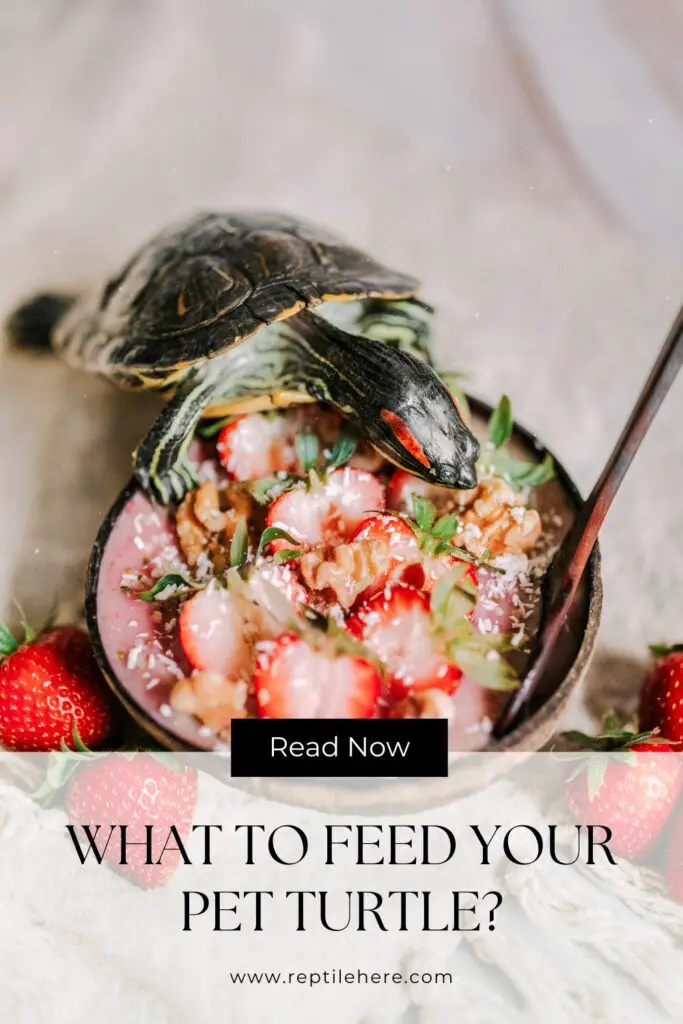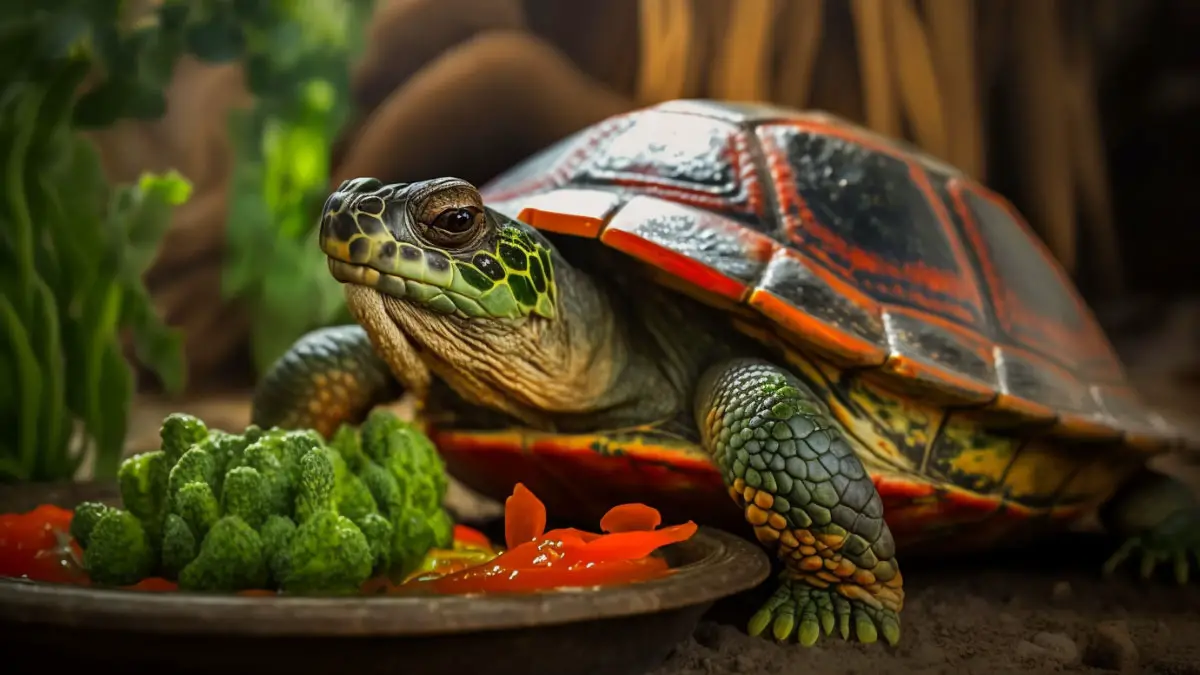What to Feed Your Pet Turtle: A Comprehensive Guide
If you acquired a turtle recently, then you’ll need to know how to feed it a healthy and balanced diet. This is part of taking good care of your turtle and keeping it happy and healthy. But what exactly should you feed your turtle?
What to food your pet turtle mostly depends on your turtle specie. Most species are omnivores, so you generally should feed it commercial pellets as well as leafy green vegetables, fruits, and live food such as crickets, slugs, worms, etc.
This guide gives you full details on the different types of food that make up a balanced and healthy diet for your turtle. Plus, we’ll discuss the nutritional requirements of turtles, and the importance of a balanced and varied diet.
What should you feed your pet turtle?
Contents
When it comes to feeding your pet turtle, you first need to understand its species dietary requirements. This is because the turtle diet can vary among species.
However, most aquatic and semi-aquatic turtles are omnivores and eat both animal protein and plant matter (vegetables and fruits).
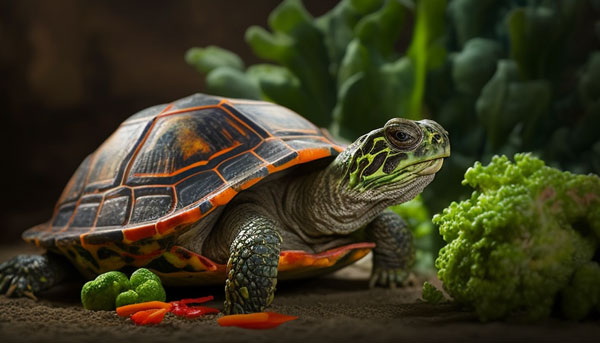
But some turtles are more carnivores and their diet should be made up of more plant materials than animal proteins.
The age of your pet turtle will also determine what to feed it. Baby turtles are mainly carnivorous as they require plenty of animal proteins for healthy growth and development.
Here’s what to feed your pet turtle:
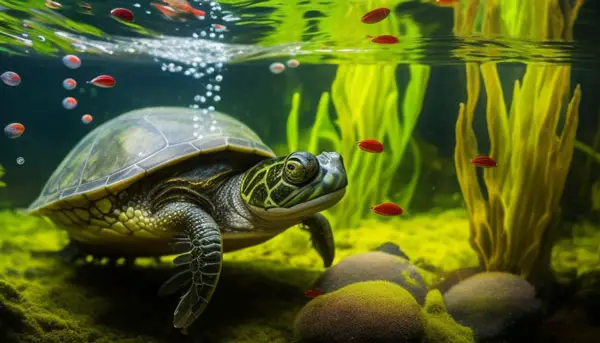
Commercial pellets
High-quality commercial pellets contain a mixture of vitamins and minerals, making them nutritious food for your beloved turtle. These should form the foundation of your turtle’s diet.
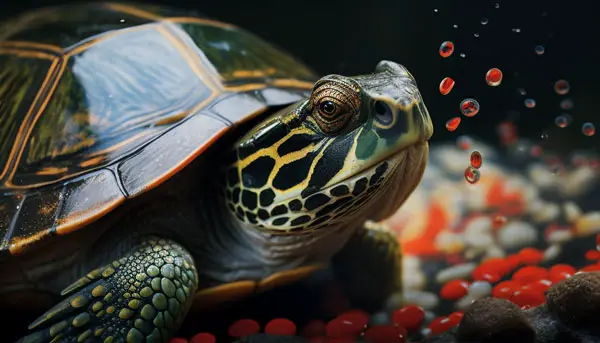
However, don’t exclusively feed your turtles on pellets, especially if you’re trying to mimic what it eats in the wild. Consider other food varieties discussed below for your pet turtle.
Vegetables
Vegetables provide your turtle with essential minerals and vitamins while allowing you to add variety to your turtle’s diet.
That said, we highly recommend focusing on leafy greens for your turtles such as spinach, collard greens, kales, dandelion greens, mustard greens, etc. (Source).
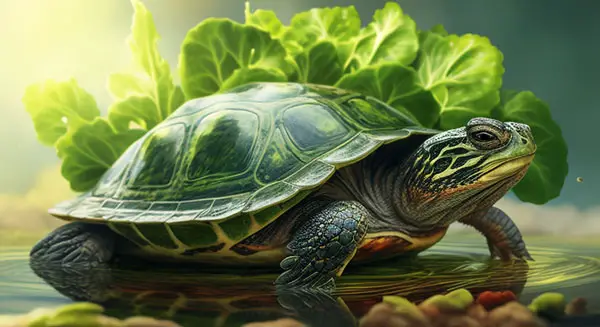
Other healthy veggies to consider for your pet turtle include carrots, sweet potatoes, squash, etc. Chopping the veggies into small bits will make them easier for your turtle to consume.
TIP: As a way of ensuring variety, you can also throw aquatic plants in your turtle’s tank. Some safe, non-toxic options to consider include water lettuce, duckweed, frogbit, and water hyacinth. You can also give your turtle fruits such as bananas, melon, apples, berries, etc. but only occasionally as special treats.
Live food
You should also feed prey food to your aquatic turtle as part of their animal protein diet. Besides, throwing live food in your turtle’s aquarium stimulates hunting instinct and enables them to exercise.
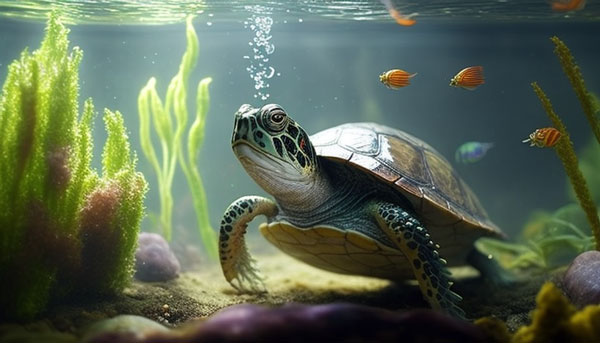
Some of the live food to give your turtle include bloodworms, crickets, earthworms, silkworms, waxworms, shrimp, krill, mealworms, etc. If you own a larger turtle, you can give it larger prey, such as feeder fish, e.g., goldfish and tadpoles.
Minerals and vitamins supplements
Minerals such as calcium are key for the healthy growth of the shell and bones in your turtle. As such, you can provide it with calcium supplements occasionally. The best way to do this is by throwing cuttlebone in its tank as it provides a rich source of calcium.
Besides, you can give your turtle vitamin D3 supplements which are also essential for its health. But make sure you consult your vet first before giving these supplements to your pet turtle. And only give them to your pet once per week.
Nutritional requirements for a pet turtle
Commercial pellets should only make up 25% of the turtle’s diet. The rest should be made up of animal proteins (25%) and plant materials (50%). This will ensure a healthy and nutritious diet that keeps your pet happy and healthy. (Source).
Keep in mind that variety is key when it comes to providing your turtle with a balanced diet. You want to avoid making your turtle a “pelletarian” (exclusively feeding on pellets).
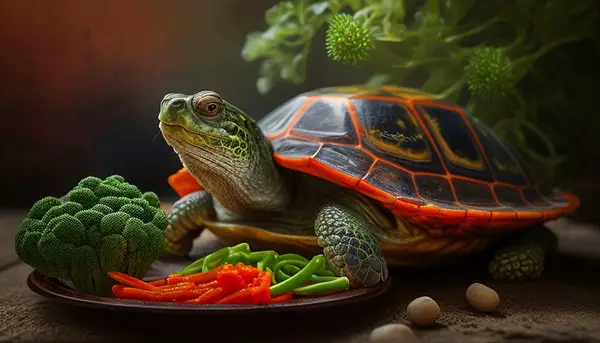
Instead, offer them a variety of fresh foods to enable them to take in the essential nutrients in different forms.
Mind you, a variety of foods can also be stimulating to your pet turtle and will make a good form of enrichment for them.
Creating a balanced diet for your turtle:
A balanced diet for your shelled friend should be made up of animal proteins and plant matter. In other words, it should contain commercial pellets, vegetables, and live prey.
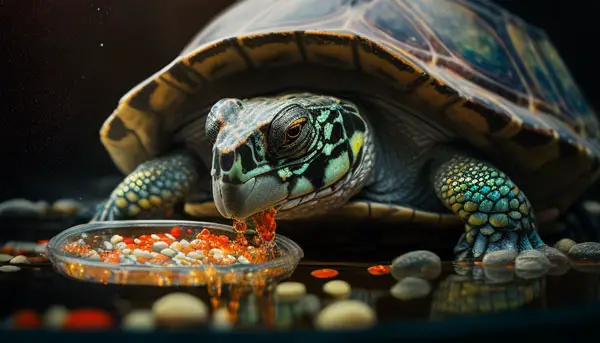
Additionally, you’d want to add mineral and vitamin supplements such as vitamin D3 and calcium to your turtle’s diet. This further helps ensure it gets all the essential nutrients for a healthy life.
Additional tips for feeding your turtle:
As part of ensuring a healthy diet, avoid feeding your turtle too much of one type of food as it can lead to various health issues.
For instance, a diet that contains too much proteins or fats can lead to turtle shell pyramiding condition.
Likewise, you should avoid your turtle. These aquatic creatures are opportunistic feeders and will eat whenever they get a chance.
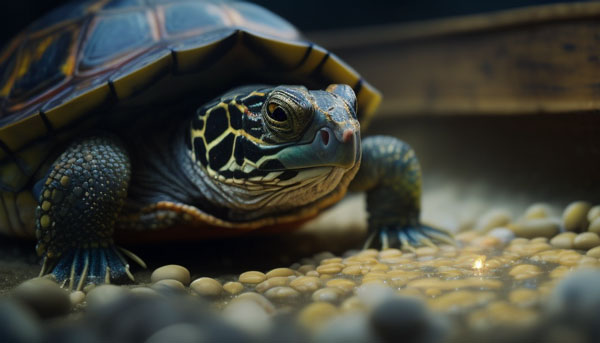
Only feed your turtle an amount of food it can finish in one sitting (for approx. 15 minutes) or an amount equivalent to the size of its head.
Regarding the feeding frequency, you should feed your adult turtle after 2-3 days. Baby or juvenile turtles need to be fed daily.
Aquatic turtles eat when inside the water, enabling them to easily swallow their food. Therefore, you’ll need to keep their tank water clean. Scoop any leftover food after every eating session to ensure proper hygiene.
Remember, the turtles will also be drinking the water in their tank, so you should keep it clean at all times.
What can you not feed a turtle?
Some foods to avoid feeding your turtle include raw meat and chicken as they can cause bacteria contamination to your pet turtle.
Lean beef or cooked chicken also lacks balanced nutrition and you should only feed it to your turtle as an occasional special treat.
The protein content in these foods may also cause kidney diseases in your pet turtle. These foods can also quickly foul the water.
Avoid feeding frozen fish as freezing tends to raise the levels of a certain enzyme in the food that interferes with vitamin B1. If you must give it to your pet, then only do it occasionally.
Frozen vegetables are usually deficient in essential vitamins and you should only feed the, to your pet occasionally but not as a staple.
Never feed wild prey or vegetation to your turtle. These may contain pesticides as well as internal parasites which can easily transfer to your pet if it eats them and make it sick.
Other types of food to avoid include avocados and poisonous plants (e.g. amaryllis).
Final Verdict
A healthy diet for your turtle is key to its overall health and well-being. The best food options for your turtle include commercial pellets, vegetables, and live food. Mineral and vitamin supplements can also help provide your turtle with essential nutrients. Occasionally feeding your turtle fruits as special treats is also recommended.
Remember this is a general guide for feeding your pet turtle. Different species usually have varying dietary requirements. Research more about the specific diet requirements of your turtle species to ensure you give a healthy and nutritious diet.
